

If you’ve been searching for kid’s activities in the last couple of years you certainly have seen discovery bottles. They are a fantastic idea both for sensory play and calm down activities. Essentially you fill bottles with water and assorted items and children move the bottles around to discover the items inside. We are using our Discovery Tubes to explore a few scientific concepts: viscosity, density, and polarity.
I know what you’re thinking, did she just say viscosity? You bet I did! Viscosity is a term commonly used to describe how fast a liquid moves. The higher the viscosity of a liquid, the slower it moves. Water is not very viscous while liquids like molasses and syrup are very viscous. Today we are going to put different liquids in clear vinyl tubing and see what magic unfolds….
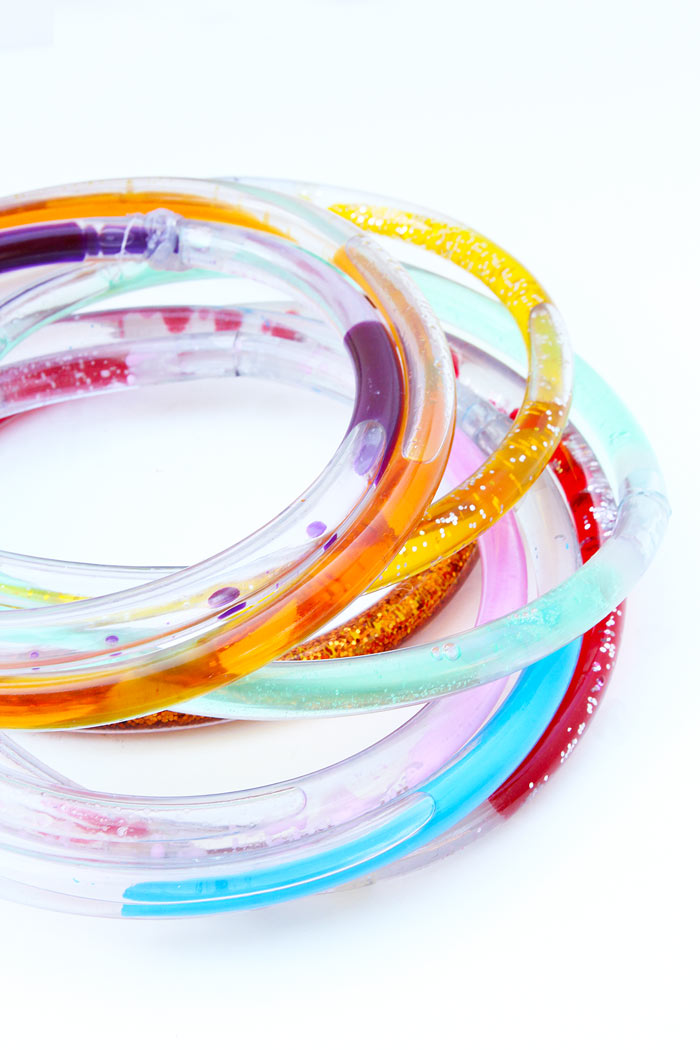
Clear vinyl tubing can be purchased here online for 75 cents/foot. You also can usually find it at your local hardware store.
This post contains affiliate links to products I love and recommend to my readers.
Science Project Idea: Discovery Tubes
Materials
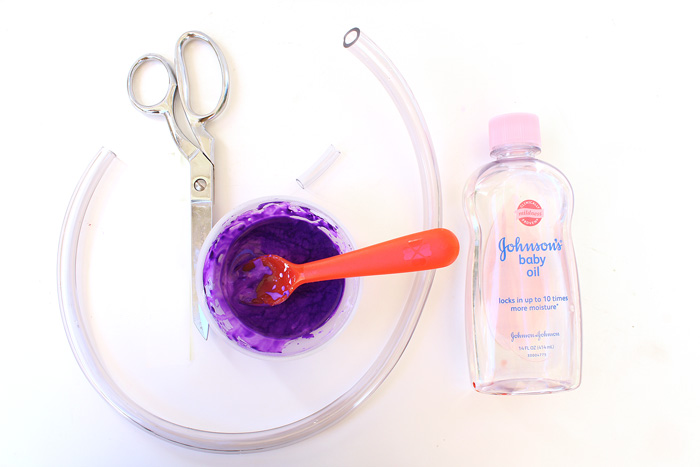
For the tubes:
- For the main tube: Large Clear Vinyl Tubing – we used THIS SIZE – Cut about 22” per discovery tube
- For the plug: Thin Clear Vinyl Tubing – we used THIS SIZE. MATCH THE OUTER DIAMETER OF THIS TUBE TO THE INNER DIAMETER OF THE LARGE TUBING– Cut about 1 ½” per discovery tube.
- Funnel (optional)
- Scissors (ADULTS ONLY)
- Hot Glue Gun
To fill them:
- Baby Oil
- Corn syrup for Oobleck
- Water
- Liquid Tempera Paint
- Glitter
Before you start: Have all your ingredients laid out. Once filled, the contents can easily spill out before sealing so you want to make sure your supplies are easily accessible.
If you are adding Oobleck see how to make it here: How to Make Oobleck
Instructions

- Step One Heat up your hot glue gun
- Step Two Begin filling one of the tubes. Depending on the tube you are making, you should always start with either baby oil or water to coat the inside of the tube. You can use a funnel to help channel the ingredients into the tube.
- Step Three Add your second and/or third ingredients. Be careful not to spill them on the outside of the tube. If you do spill, you can wipe the tubes off after they are sealed. Leave a small gap (about 2 inches) of air in the tube.
- Step Four Holding the open ends of the tubes up so as not to spill out the contents, squeeze hot glue into one open end of the tube. Try and fill the inside diameter of the tube. Press the ¼” diameter 1 1/2“ long section of tubing into the main tube/hot glue. Repeat this on the other open end of tubing and press together to seal. Hold while the hot glue cools.
- Step Five If desired add a little hot glue around the joint.
You’re done. Make more!
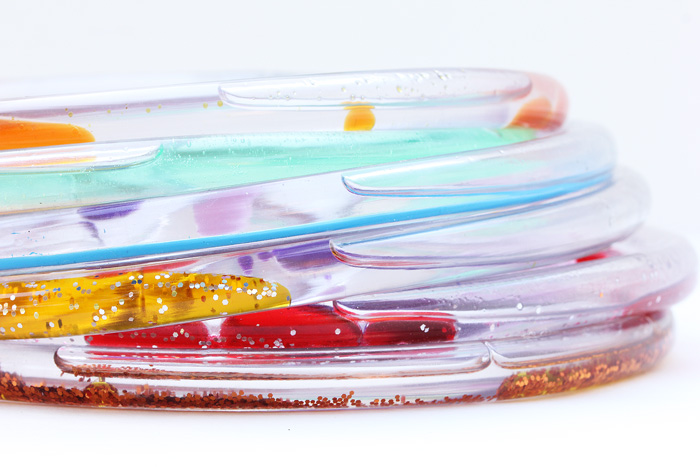
Tips:
- DO NOT SEAL THESE WITH TAPE! Before I discovered the hot glue trick I simply covered the joint with duct tape. BAD IDEA! The adhesive on tape will get moistened by the baby oil and slowly leak and make for a gooey oily mess! Stick with the hot glue.
- Even with the hot glue there is a chance that these may leak a little. I had a great success rate with the hot glue but the joints are flexible and prone to a small leak. Be sure to play with these in a place you don’t mind getting a little oily.
- If you add liquid tempera paint to your tube make sure you have coated the entire inside of the tube with baby oil first! If the inside of the tube is not coated, the paint will stick to it. Another way to prevent the tempera from sticking to the sides is to only use a small amount of paint compared to baby oil.
- We tried using multiple colors of paint and corn syrup to create a rainbow effect. Please note that if you try this the colors will end up mixing together at some point.
- If you want to remake a tube simply trim the ends off, rinse out and start over!
Combinations

Note: To color our water, corn syrup, oobleck and rice we used these watercolors.
- Baby Oil + Colored Water (add glitter too)
- Baby Oil + Colored Dish soap + Clear corn syrup
- Baby Oil + Colored corn syrup + glitter
- Baby Oil + Tempera paint (add only a little paint and be sure to coat the inside of the entire tube with baby oil first!
- Baby oil + colored oobleck
- Water + Perler Beads + Dish soap
- Baby Oil + Colored Rice
There are so many variations to try, if you have any good ideas please leave comment below!
Scientific Concepts Explored:
Viscosity
As I mentioned at the beginning of this post our Discovery Tubes are a great way to illustrate the concept of viscosity to kids! Viscosity is the measure of friction in a liquid and determines how fast or slow a liquid flows. Water has a low viscosity and flows quickly while liquids like corn syrup, soap, molasses, and lava have a high viscosity and move slowly. Putting liquids of different viscosities together in a tube is a great visual display of viscosity. And did you know that beyond being a scientific term viscosity is something many artists think about? Check out this video from the Khan Academy illustrating different methods of changing the viscosity of paint.
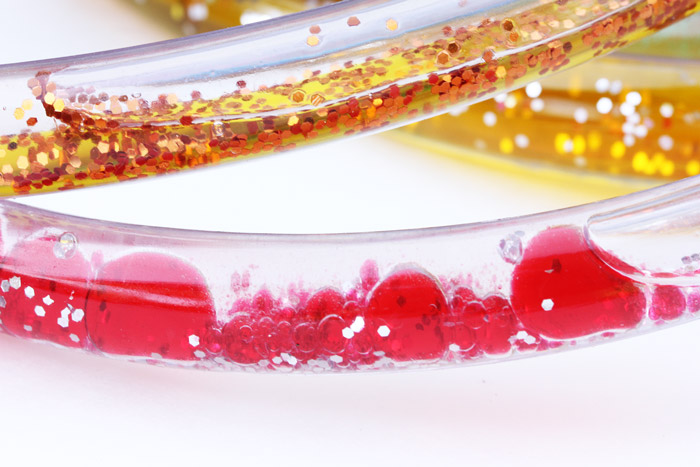
Polarity & Density
Discovery Tubes are also a great way to demonstrate two more scientific concept to kids: density and polarity. Density and polarity are the reasons that oil and water don’t mix and instead make for an incredible display of dancing bubbles in the tubes where we used baby oil and water.
Density is the measure of how heavy the particles that make up a substance are and how close the particles are together. Water and oil have different densities: the molecules of water are very densely packed making each drop heavier than each drop of oil. When you put water and oil together, the water sinks to the bottom and the oil floats on top.
Polarity is a pretty hefty concept to explain but let’s simplify it by saying that certain molecules are attracted to or repel other molecules, similar to the way magnets behave only on a microscopic level. In chemistry substances with SIMILAR AMOUNTS of polarity are attracted to each other (magnets differ in that they are attracted to opposite poles). Water molecules are polar and oil molecules are not, so the water molecules are attracted to each other and push the oil molecules out of the way to get to each other, hence oil and water don’t mix. Here is a more detailed explanation of both polarity and density in chemistry for kids.
Looks Like
Stanley William Hayter. Stanley William Hayter was an artist and printmaker who worked in Paris and New York and collaborated with many well known moderns artists to help them incorporate printmaking into their repertoire. He worked with the likes of Picasso, Mark Rothko, Wassily Kandinsky and Jackson Pollock on limited edition prints. He was also an artist in his own right, creating 400 original prints in his lifetime. Mr. Hayter is also credited with developing the art technique called viscosity printing, which is why we are talking about him here today. Before he invented this print making technique, different colors on a single print had to be laid down in separate presses. Viscosity printing exploits the different viscosities of paint and allows you to make a print with different colors in one single press. I love it when science and art come together like that!


I hope you liked toy that teaches!
Even if you don’t feel like getting into the nitty gritty of the science behind this project Discovery Tubes are just fun to watch! I can see these being used like Calm Down Jars or for sensory play in preschool as well. And I love it when science for kids is presented in a mesmerizing and colorful way.
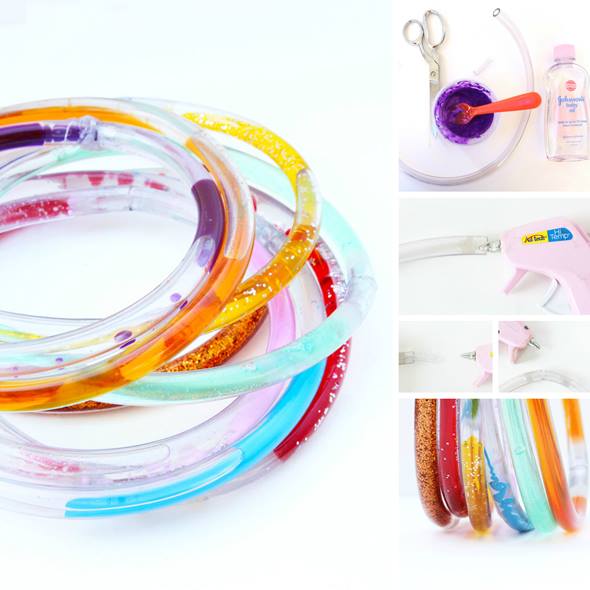
More DIY Toys That Teach:
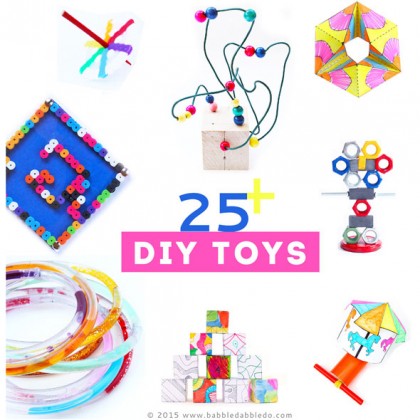
Fill your child’s life with more art, design, science, and engineering!
Subscribe and get our projects delivered straight to your inbox.
Original article and pictures take http://babbledabbledo.com/science-kids-discovery-tubes/ site
Комментариев нет:
Отправить комментарий